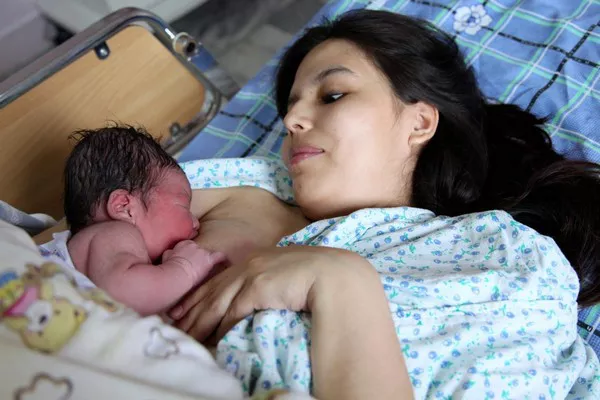The postpartum period is a transformative time for new mothers, both emotionally and physically. While breastfeeding is often associated with breast discomfort and soreness, it’s important to acknowledge that women who choose not to breastfeed may also experience breast soreness. In this comprehensive guide, we explore various strategies to help relieve sore breasts after giving birth, specifically for women who are not breastfeeding. Understanding the causes and implementing these tips can aid in your postpartum recovery and promote overall comfort.
Understand the Causes of Breast Soreness:
Breast soreness after giving birth, even in the absence of breastfeeding, can occur due to several factors. These include hormonal changes, engorgement, and milk production suppression. Hormonal fluctuations, particularly the surge of estrogen and progesterone during pregnancy, can cause breast tissue to become tender and sensitive. Engorgement, which involves swelling of the breasts due to increased blood flow and fluid retention, can happen when milk production is stimulated but not expressed. Additionally, if a woman intended to breastfeed but changed her decision, her body may need time to adjust and suppress milk production. Understanding these causes can guide you in finding effective relief strategies.
Cold Compresses:
Applying cold compresses to the breasts can help alleviate soreness and reduce inflammation. Take a clean cloth or ice pack and wrap it in a thin towel. Place the compress on each breast for 15-20 minutes at a time. The cold temperature constricts blood vessels, reduces swelling, and provides temporary relief from discomfort. You can repeat this several times a day as needed.
Supportive Bras:
Wearing a well-fitted and supportive bra can provide comfort and alleviate breast soreness. Look for bras made of soft, breathable fabric without underwire. Underwire bras may further irritate sensitive breast tissue. A supportive bra can minimize movement and provide gentle support to the breasts, reducing discomfort and promoting healing. Consider getting professionally fitted for a bra to ensure the perfect fit.
Warm Compresses:
In some cases, using warm compresses can be soothing for sore breasts. Fill a basin or bowl with warm water and soak a clean towel or cloth in it. Wring out the excess moisture and place the warm compress on each breast for 10-15 minutes. The warmth improves circulation, relaxes the breast tissue, and provides relief from soreness. Warm compresses can be particularly helpful if engorgement or swelling is present.
Pain Relief Medication:
Over-the-counter pain relief medication, such as acetaminophen or ibuprofen, can be used to manage breast soreness. However, it’s crucial to consult with a healthcare professional before taking any medication, especially if you have any underlying medical conditions or are taking other medications. They can provide guidance on appropriate dosage and usage to ensure your safety and comfort.
Gentle Massage:
Performing a gentle breast massage can help alleviate soreness and improve blood flow. Use your fingertips to apply light circular motions, starting from the outer edges of the breasts and moving towards the nipple. Be gentle and mindful of any discomfort. Massaging can help release tension, promote relaxation in the breast tissue, and improve overall comfort. You can use a natural oil or lotion to facilitate smoother movements during the massage.
Cabbage Leaf Compress:
Cabbage leaf compresses have long been used as a natural remedy to relieve breast engorgement and soreness. Take a chilled cabbage leaf, remove the thick stem, and place it inside your bra, covering the sore areas of the breasts. Leave the compress on for about 20 minutes or until the cabbage leaf warms up. Some women find that cabbage leaves provide soothing relief and help reduce inflammation. However, it’s important to discontinue use if you experience any adverse reactions.
Good Hygiene Practices:
Maintaining good hygiene practices is crucial for preventing infections and promoting healing. Keep the breast area clean and dry. Avoid using harsh soaps, lotions, or perfumes on the breasts, as they can further irritate the skin. Opt for mild, unscented cleansers when washing the breast area. Wear clean, breathable clothing and consider using breast pads to absorb any leakage or moisture. Change breast pads frequently to maintain cleanliness and prevent bacteria growth.
Time and Rest:
Allowing yourself time to heal and recover after childbirth is essential. Your body undergoes numerous changes during pregnancy and childbirth, and it takes time for hormones to regulate and breast tissue to adjust. Be patient with yourself and prioritize self-care. Get sufficient rest and sleep whenever possible. Adequate rest supports your overall well-being and can contribute to the healing process, including relief from breast soreness.
Seek Professional Advice:
If breast soreness persists or becomes increasingly uncomfortable, it’s important to consult a healthcare professional. They can assess your individual situation, provide tailored advice, and rule out any underlying medical conditions that may be contributing to the discomfort. A healthcare professional can also offer additional recommendations or treatments specific to your needs.
Conclusion:
Experiencing breast soreness after giving birth, whether breastfeeding or not, is a common occurrence. By understanding the causes and implementing strategies such as cold and warm compresses, supportive bras, gentle massage, and good hygiene practices, you can find relief and promote healing. Remember to prioritize self-care, seek professional advice if needed, and give your body the time it needs to recover from childbirth. Each woman’s postpartum journey is unique, and it’s important to listen to your body and seek support when necessary.


